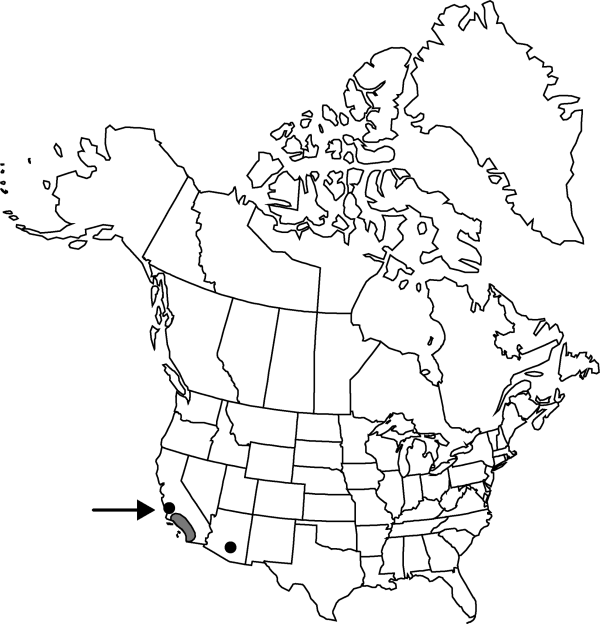Opuntia ficus-indica
Gard. Dict. ed. 8, Opuntia no. 2. 1768.
Trees, 3–6 m; trunk to 30–45 cm diam. Stem segments green, broadly oblong to ovate to narrowly elliptic, (20–)4–60 × 2–3+ cm, low tuberculate; areoles 7–11 per diagonal row across midstem segment, rhombic to subcircular, 2–4(–5) mm diam.; wool brown. Spines 1–6 per areole, absent or very highly reduced, or in marginal to nearly all areoles, erect to spreading, whitish, tan, or brown, setaceous only or setaceous and subulate, straight to slightly curved, basally angular-flattened, 1–10(–40) mm; 0–2 small bristlelike deflexed spines to 5 mm. Glochids along adaxial margin of areole and small, inconspicuous tuft, yellowish, aging brown, less than 2 mm. Flowers: inner tepals yellow to orange throughout, 25–50 mm; filaments and anthers yellow; style bright red; stigma lobes yellow. Fruits yellow to orange to purple, 50–100 × 40–90 mm, fleshy to ± juicy, glabrous, usually spineless; areoles 45–60, evenly distributed on fruit. Seeds pale tan, subcircular, 4–5 mm diam., warped; girdle protruding to 1 mm. 2n = 88.
Phenology: Flowering spring (Apr).
Habitat: Coastal chaparral, sage scrub, arid uplands, washes, canyons, disturbed sites
Elevation: 0-300 m
Distribution

Introduced; Ariz., Calif., Mexico.
Discussion
R. P. Wunderlin (1998) listed this taxon in Florida, but I have not seen specimens.
Opuntia ficus-indica, cultivated nearly worldwide, is presumed to be a native of Mexico, but is definitely known only from cultivation or escapes from cultivation. The species has been used for cattle feed, ornament, and fuel. As human food, the young stem segments, “nopalitos,” are eaten as salad or pickled as a vegetable, and the large delicious fruits, “tunas,” are enjoyed in tropical and subtropical regions worldwide.
This species probably originated through selection by native peoples of Mexico for spineless forms of Opuntia streptacantha (also 2n = 88) to ease the culturing and collection of cochineal scale insects for their red dye. Numerous cultivar names are known.
Naturalized Opuntia ficus-indica (octoploid, spiny morphotype) is known to hybridize in central California with O. phaeacantha (hexaploid), forming a heptaploid with usually intermediate morphology.
Selected References
None.